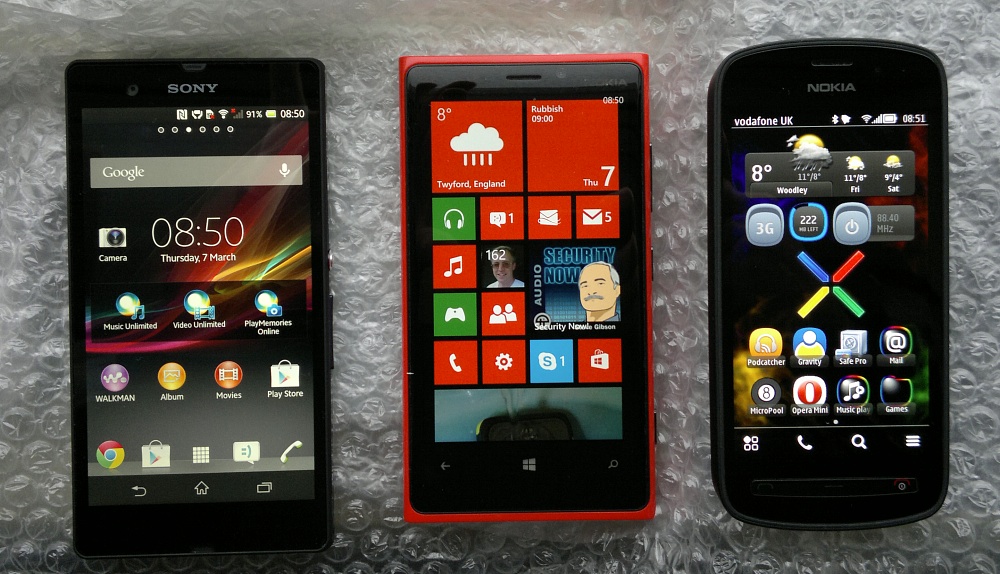
With three completely different mobile operating systems represented here, doing an exact comparison by any reasonable metric is always going to be controversial, of course. Each of these devices, in the right hands, is fast and potentially very productive (and yes, I'd pitch Symbian in the 808 up against the best of Android in many areas).
But one thing you can do very easily is compare the results from the devices' cameras, one of the defining features of any modern smartphone. Using the same test scenes as for my recent N8 article, I show and analyse photos below to deliver comment and analysis.
Notes:
- All phones were left on full auto (aside from flash control).
- All phones were in 16:9 shooting mode.
- The Nokia 808 defaults to 5MP, so I used the Creative 8MP mode instead. The other two phones work out at about 9MP, so a fairly level playing field.
- In each comparison crops below, the 808 photo is always on the left, the Xperia Z one in the middle and the Lumia 920 one on the right.
- Note the seemingly different crop factors - this is due to field of view differences between the devices - the Xperia Z's field of view was significantly less than the cams in the two Nokias. Neither approach is necessarily better - they're just different.
- In order to keep track of rankings, I'll give scores out of 10 for detail in each shot by each phone camera.
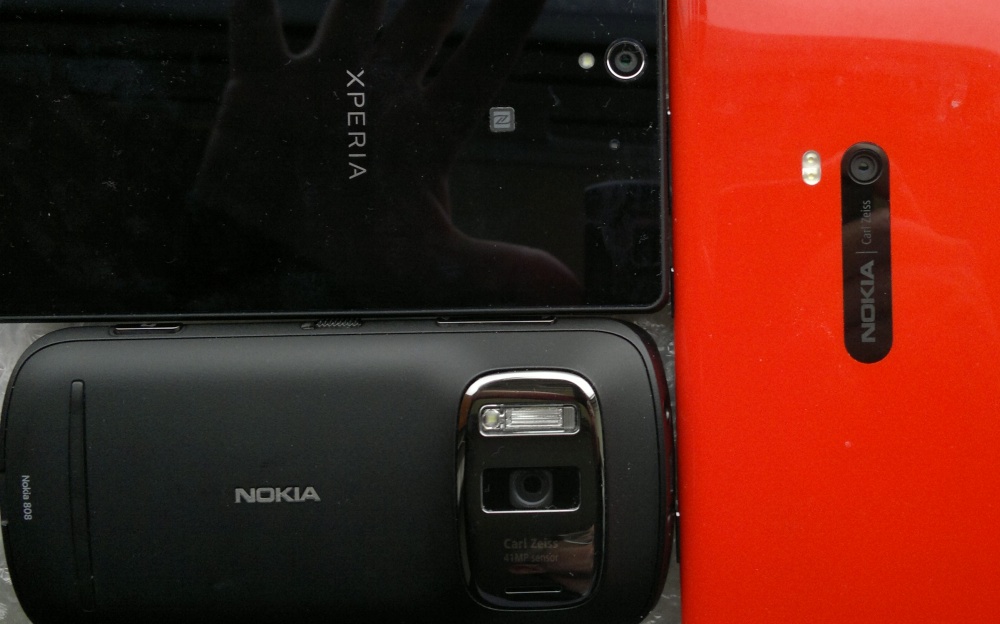
Test 1: Medium distance detail, bright sky behind, overcast
The aim here was to pick out detail and trust the Xperia Z's built-in auto-HDR to kick in. Below is shown the full scene. Here are the original images from each phone camera: Nokia 808, Xperia Z and Nokia Lumia 920, all in JPG form with EXIF data, for you to peruse if you wish.
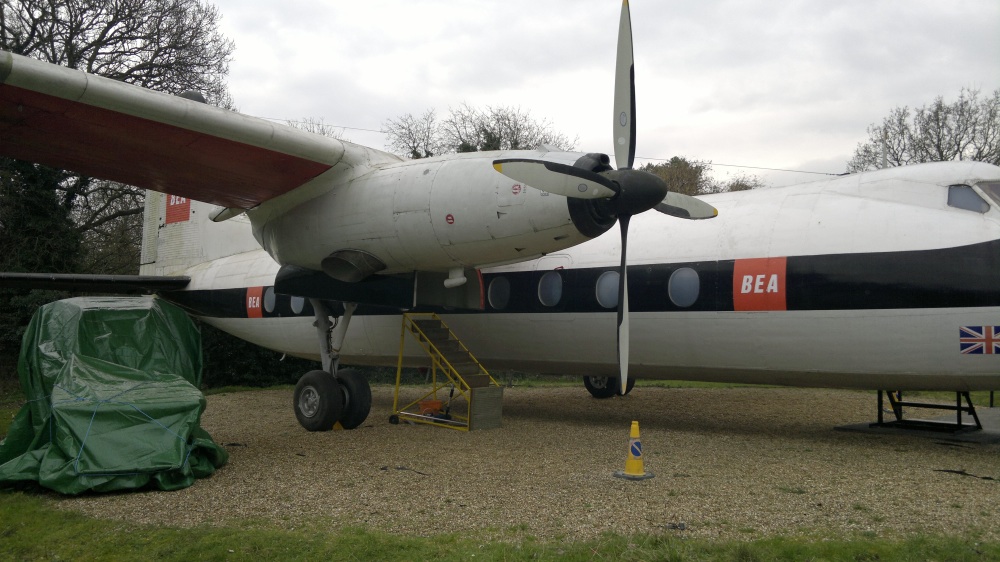
As usual, I try and do the analysis for you. In this case, looking at both the overall handling of light, dark and colour, and also cropping into compare central details:
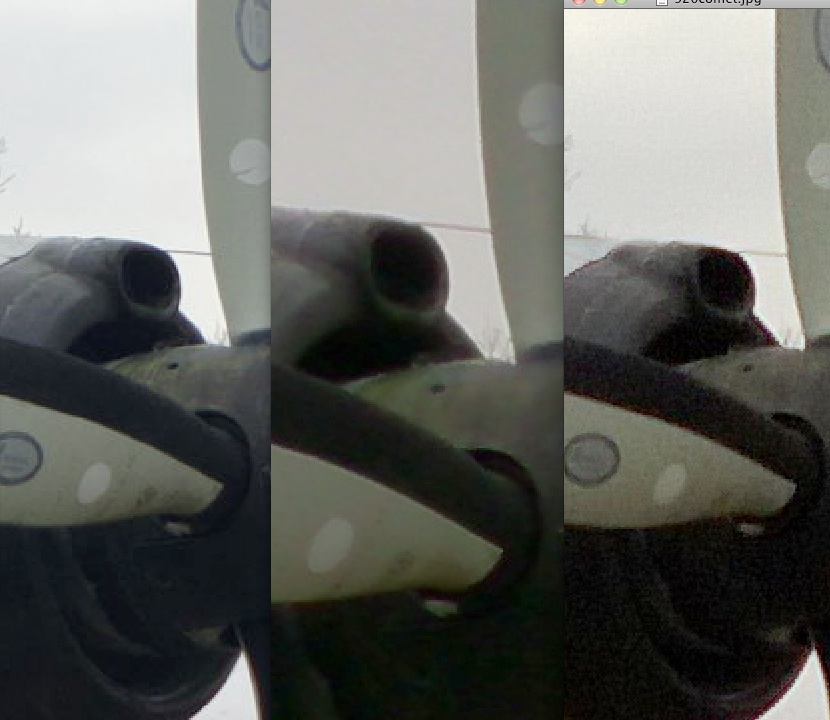
A very clear winner here, obviously, with the 808's image being clean and detailed. The Xperia Z's photo errs heavily on the side of noise reduction, while the Lumia 920's image is noisy, jagged and unpleasant.
Nokia 808: 9pts; Xperia Z: 6pts; Lumia 920: 4 pts
Test 2: Still overcast, a little closer, again shooting against the sky
Again playing to the Xperia Z's strength, here's another shot which is sure to be HDRed by the Z. Below is shown the full scene. Here are the original images from each phone camera: Nokia 808, Xperia Z and Nokia Lumia 920, all in JPG form with EXIF data, for you to peruse if you wish.
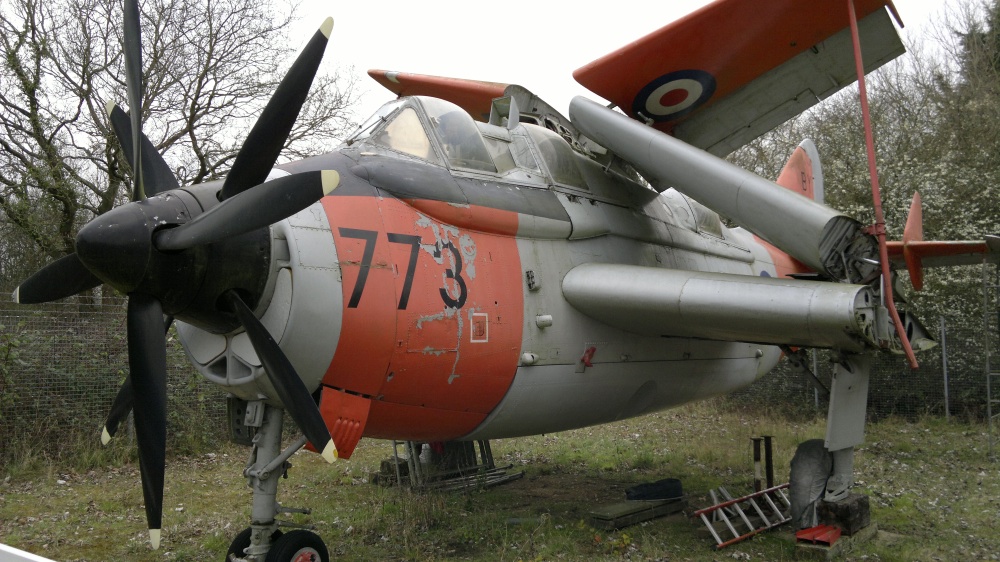
As usual, I try and do the analysis for you. In this case, looking at both the overall handling of light, dark and colour, and also cropping into compare central details:
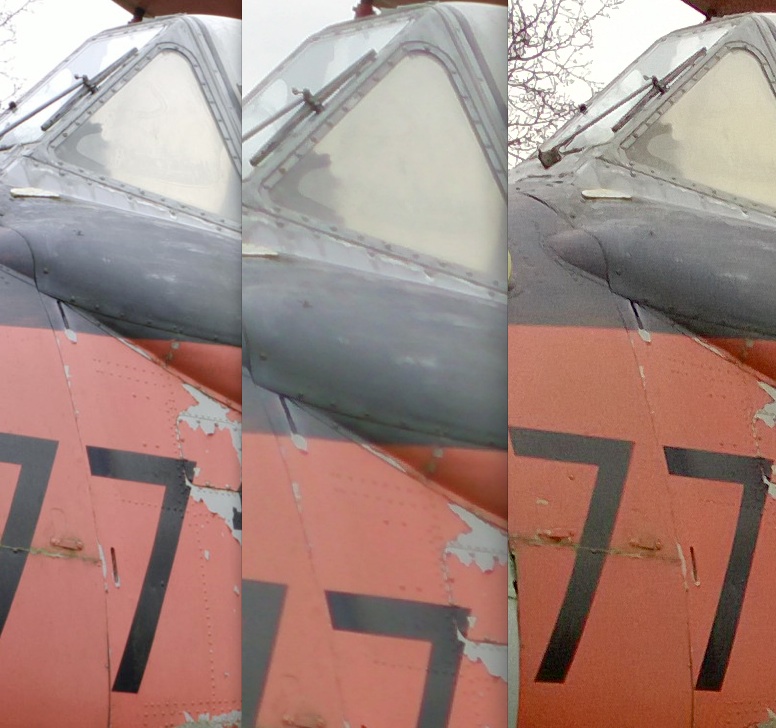
A surprisingly good showing from the Lumia 920 here, with crisp detail and only a little noticeable noise, while the Xperia Z image is pleasant enough but ultimately too blurred in terms of detail by all the noise reduction. The Nokia 808 just edges this one, with more natural detail and (as usual with the PureView phase 1) almost no noise whatsoever.
Nokia 808: 8pts; Xperia Z: 5pts; Lumia 920: 6 pts
Test 3: Low light, inside (the cockpit), close subject, extreme detail available, no flash
Below is shown the full scene, deliberately exposed/framed in each case for the cockpit detail and not the outside. Here are the original images from each phone camera: Nokia 808, Xperia Z and Nokia Lumia 920, all in JPG form with EXIF data, for you to peruse if you wish.
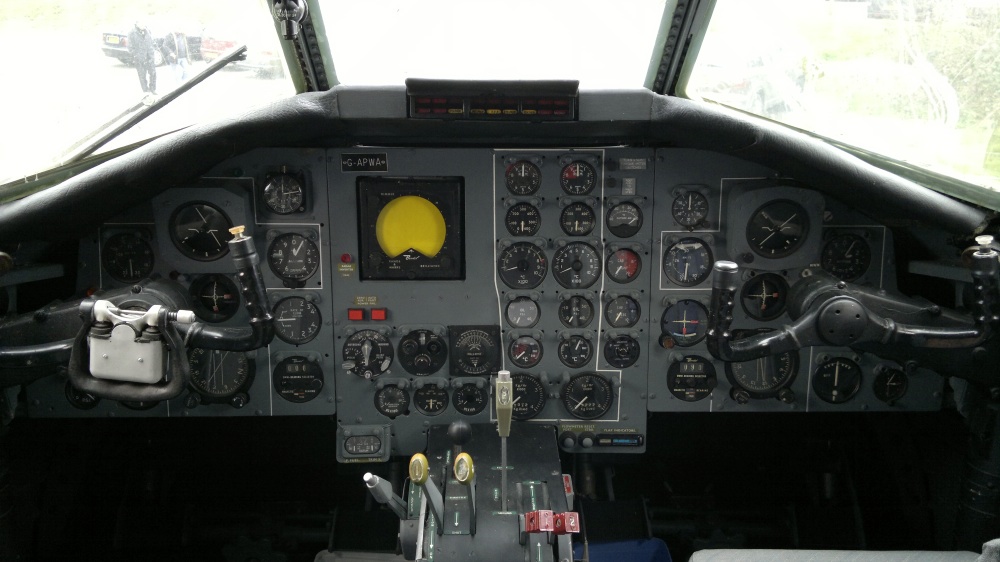
As usual, I try and do the analysis for you. In this case, looking at both the overall handling of light, dark and colour, and also cropping into compare central details:
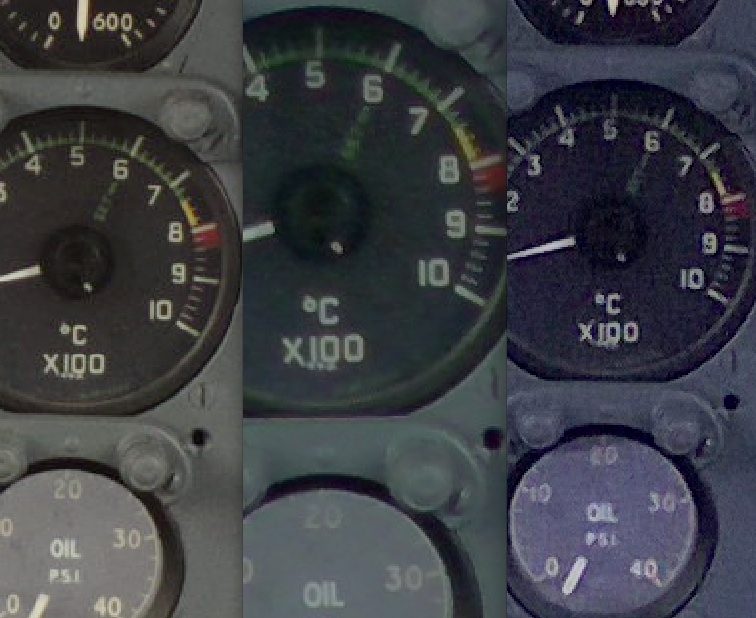
As the light levels go down, the Nokia 808's sensor size, optics and PureView oversampling come into play more, despite the BSI and image processing on the Xperia Z's camera. Physics wins, I think. The 808's photo is just amazingly crisp, accurate and noise-free. The Lumia 920's version is crisp enough but the horrible noise and artefacts show the compromises cameras in phones suffer when their sensors are this small. The Xperia Z, with the same size sensor, produces a different, smoothed and blurred result. Neither are very attractive though.
Nokia 808: 10pts; Xperia Z: 5pts; Lumia 920: 5 pts
Test 4: Indoors, lots of artificial light, bright window behind, plenty of colour and detail
Below is shown the full scene. Here are the original images from each phone camera: Nokia 808, Xperia Z and Nokia Lumia 920, all in JPG form with EXIF data, for you to peruse if you wish.
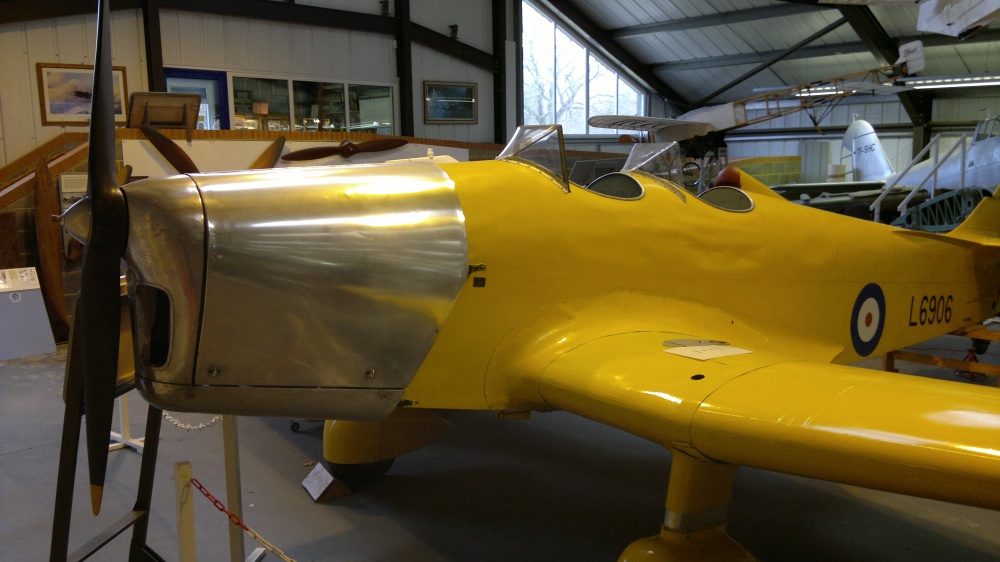
As usual, I try and do the analysis for you. In this case, looking at both the overall handling of light, dark and colour, and also cropping into compare central details:
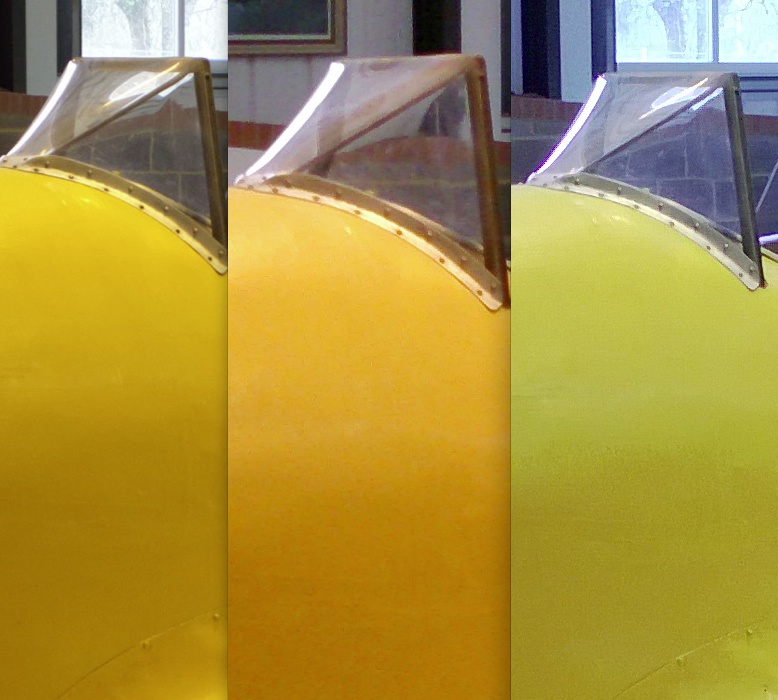
Feast your eyes on the colours, the detail and the purity in the image crop from the Nokia 808. Yet again, we're almost in DSLR territory - on a phone. In contrast, the Xperia Z gets the colour slightly wrong and the cockpit detail is slightly blurred from the noise reduction, while the Lumia 920 does a decent job in terms of crispness but also gets the colour slightly wrong, showing it as paler throughout the scene.
Nokia 808: 9pts; Xperia Z: 5pts; Lumia 920: 7 pts
Test 5: Bright and dark, challenging focus, no flash again
Below is shown the full scene, in each case I focussed on the third seat from the back of the cabin. Here are the original images from each phone camera: Nokia 808, Xperia Z and Nokia Lumia 920, all in JPG form with EXIF data, for you to peruse if you wish.
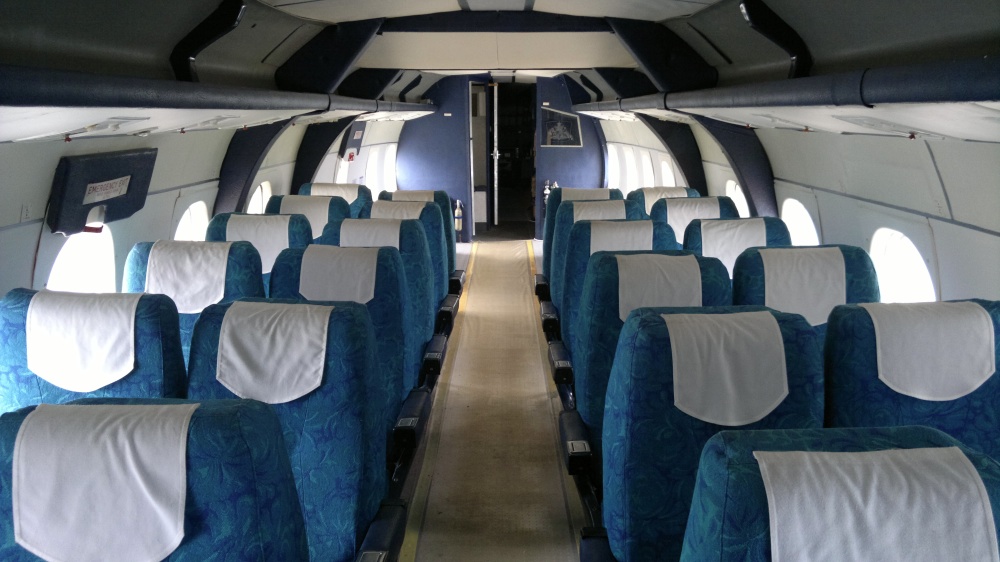
As usual, I try and do the analysis for you. In this case, looking at both the overall handling of light, dark and colour, and also cropping into compare central details:
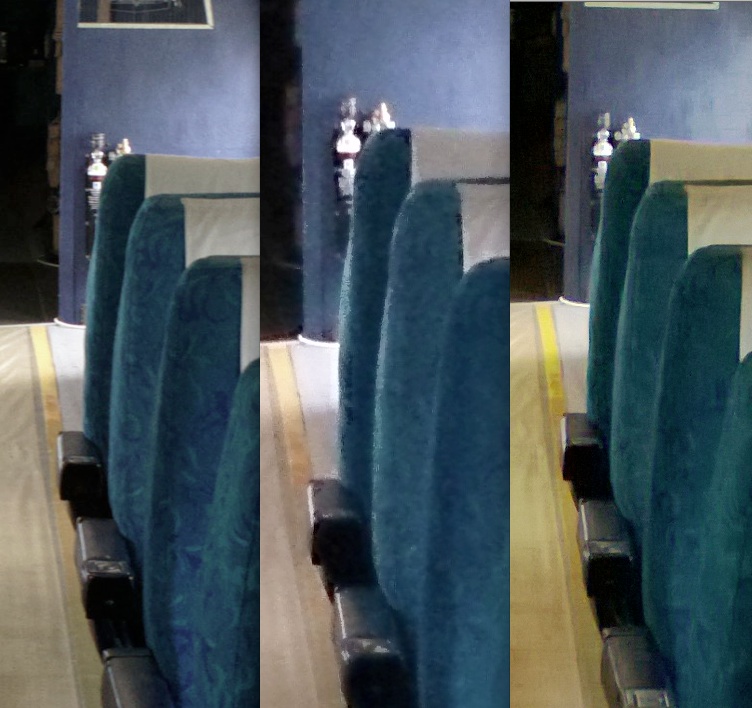
Sorry, Sony, I'm sure your BSI EXMOR RS sensor is the best you've ever made, but it doesn't come close to resolving the detail from photos taken by the two Nokias. Look at the seat texture, the edges of the head covers, the extinguisher in the background. All show the artefacts in the Xperia Z image, while the 808's photo just shows lovely detail.... Surprisingly, the Lumia 920 gets close to the 808 in this crop, showing much of the same seat texture and good edge detail.
Nokia 808: 8pts; Xperia Z: 5pts; Lumia 920: 7 pts
Test 6: subject with detail at 1.5 metres, flash allowed
For the first time in this test, I'm letting the 808 unleash another of its secret weapons - its proper Xenon flash. Below is shown the full scene. Here are the original images from each phone camera: Nokia 808, Xperia Z and Nokia Lumia 920, all in JPG form with EXIF data, for you to peruse if you wish.
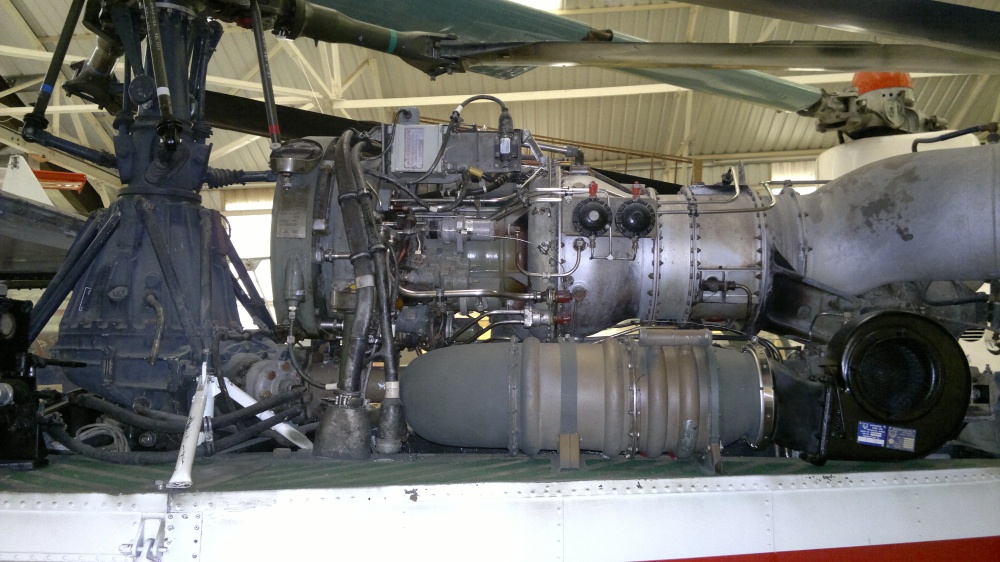
As usual, I try and do the analysis for you. In this case, looking at both the overall handling of light, dark and colour, and also cropping into compare central details:
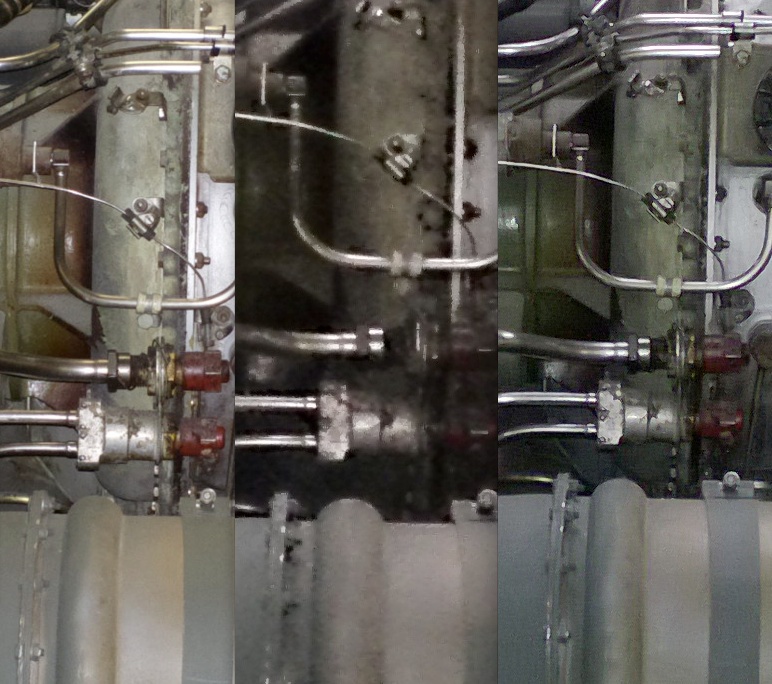
The problem with the Xperia Z's camera is that noise reduction - look how blurred the detail is again. What's interesting here is how well the Lumia 920 does with its Optical Image Stabilisation and dual LED flash. I still prefer the 808's photo and detail overall, but look how incredibly crisp the 920 gets the engine parts. It's let down only by artefacts and digital noise in regions of solid colour/darkness.
Nokia 808: 9pts; Xperia Z: 4pts; Lumia 920: 8 pts
________________________
Add up the points and you get:
- Nokia 808 PureView: 52
- Nokia Lumia 920: 37
- Sony Xperia Z: 30
In truth, these rankings are about what I'd expect overall. I make a point of not scoring photos until I've done all the crops and of not adding up the scores until the very end, but I'd already got a sense that the Nokia 808 PureView was, as expected, in a different league to the other two phones when it comes to still photography. More and more tech sites are leaving the 808 out of their comparisons simply because it's not fair to the competition (and, usually, because they discount Symbian as a smartphone OS - wrongly IMHO). It's like putting up the fastest roadcars against a Red Bull F1 car - they're simply in a different race.
What was interesting here was which of the 1/3"-sensored camera phones would win. The camera champions from the Android and Windows Phone worlds. Although the Nokia Lumia 920 made something of a hash of a couple of the shots, it also surprised in equal measure. The 920's camera does seem to be still struggling against Windows Phone's drivers and against its own algorithms and I'd welcome more consistency in its results. Roll on the next firmware update?
Meanwhile the new 2013 Xperia Z disappoints as a camera at every turn. It's patently obvious from all the crops above that, in the desperate fight against digital noise in its 13MP sensor with tiny pixels, noise reduction algorithms are employed which also throttle the life out of any decent detail. Much better would be to have less pixels, larger microsites, less noise and thus less noise reduction needed. Which, not coincidentally, is what HTC has done for its imminent HTC One, outputting at a 'mere' 4 megapixels, and this will form the basis of my next smartphone camera shootout (against the 808 in its default 5MP mode, of course).
Watch this space.
